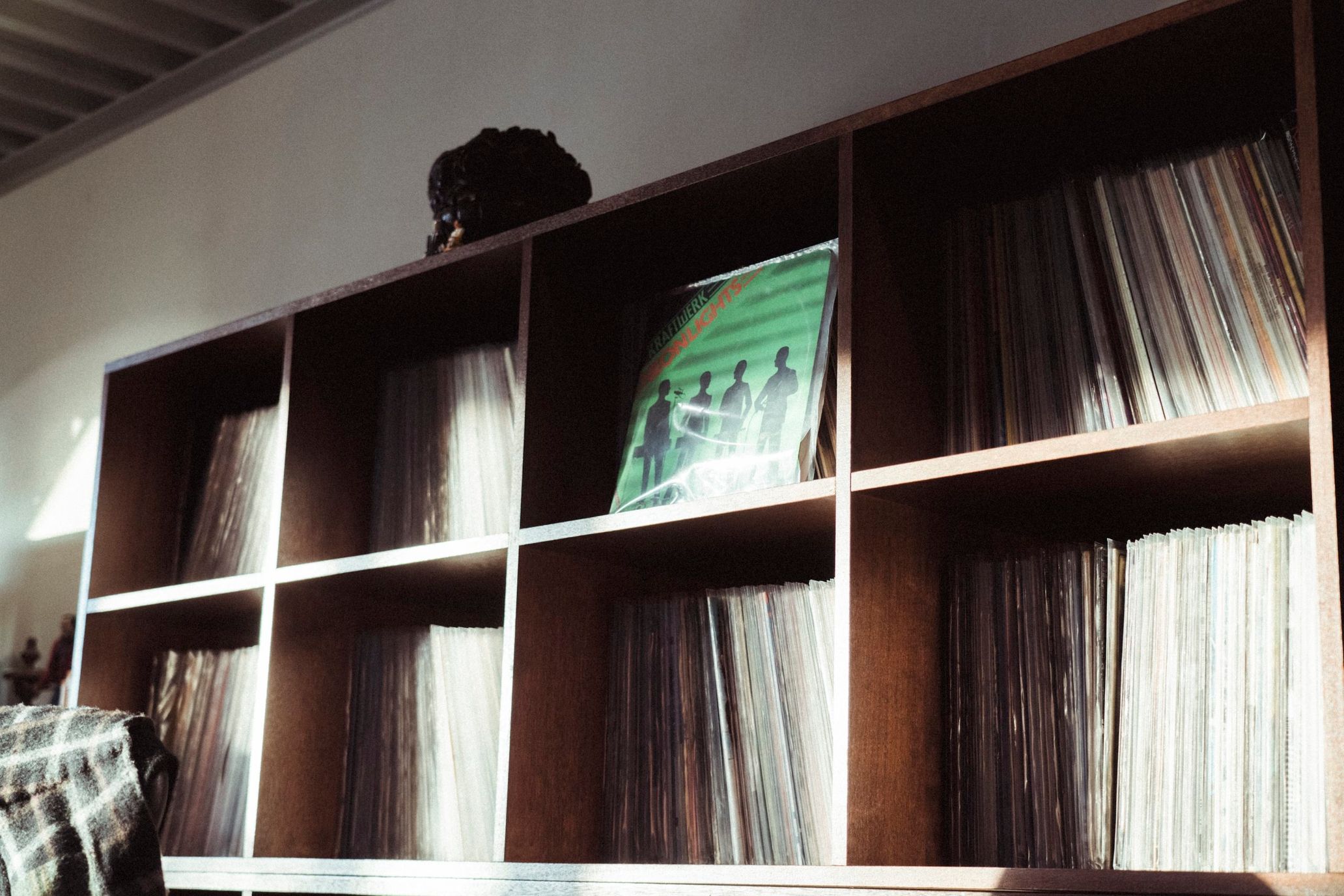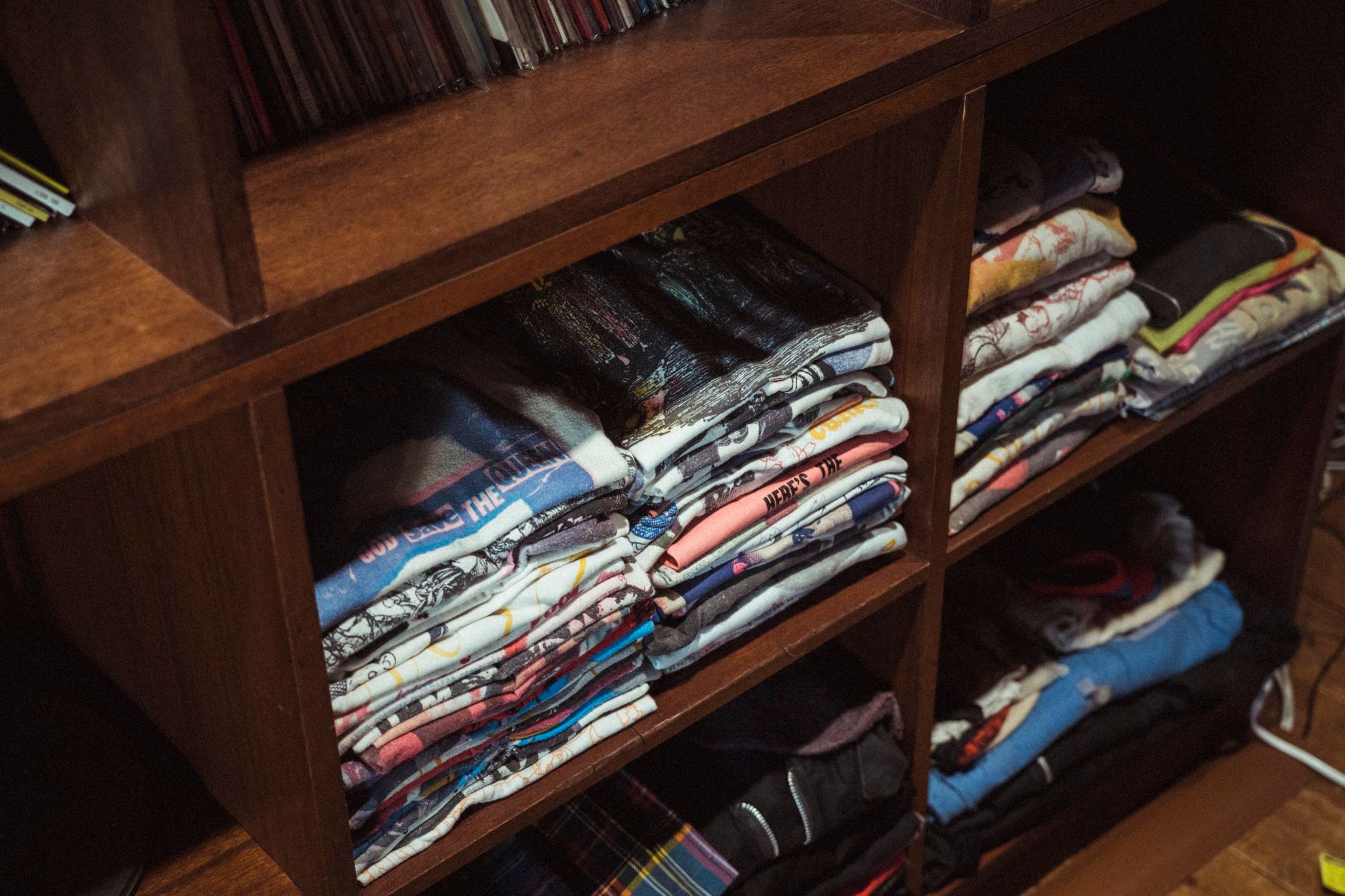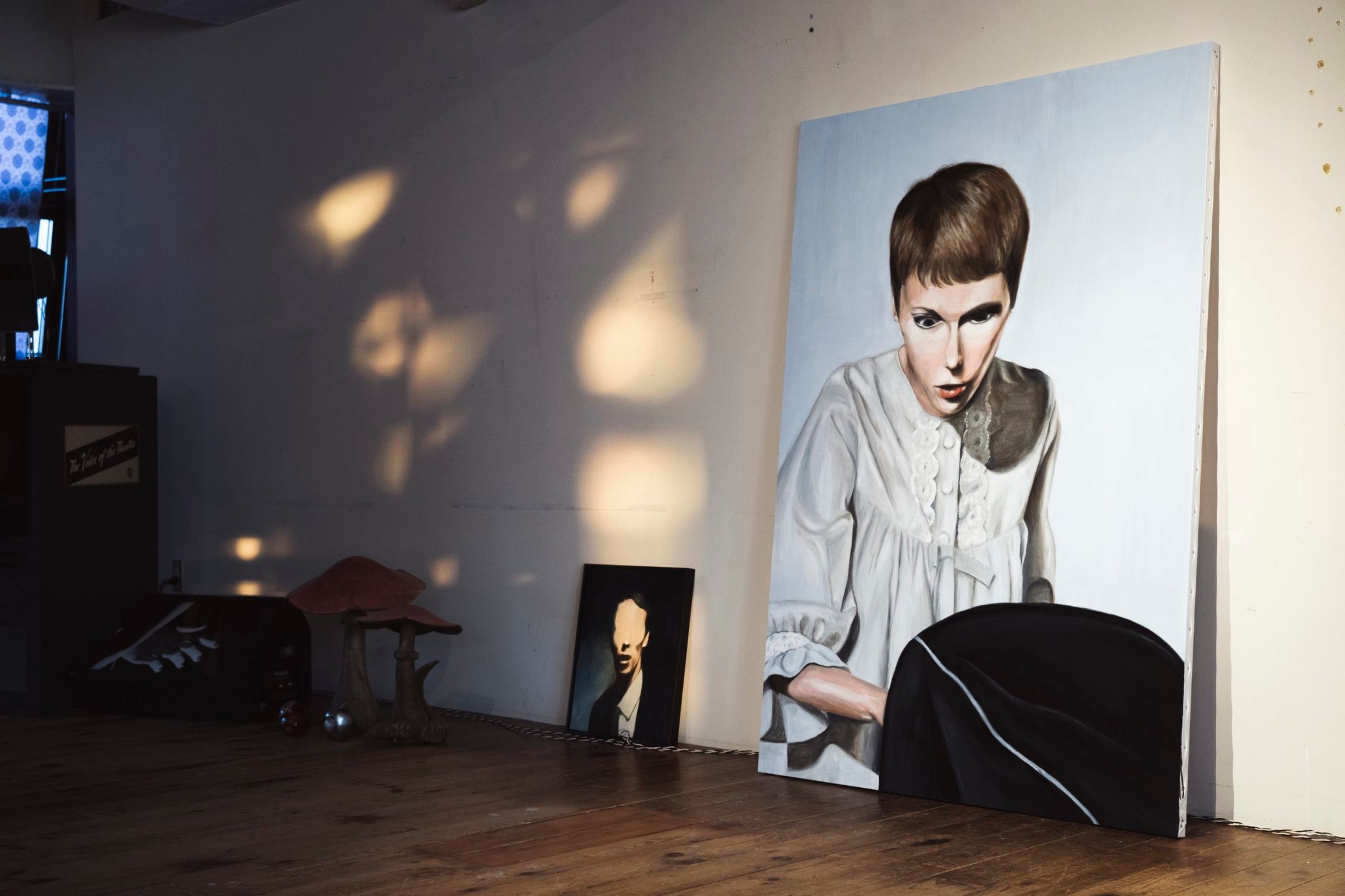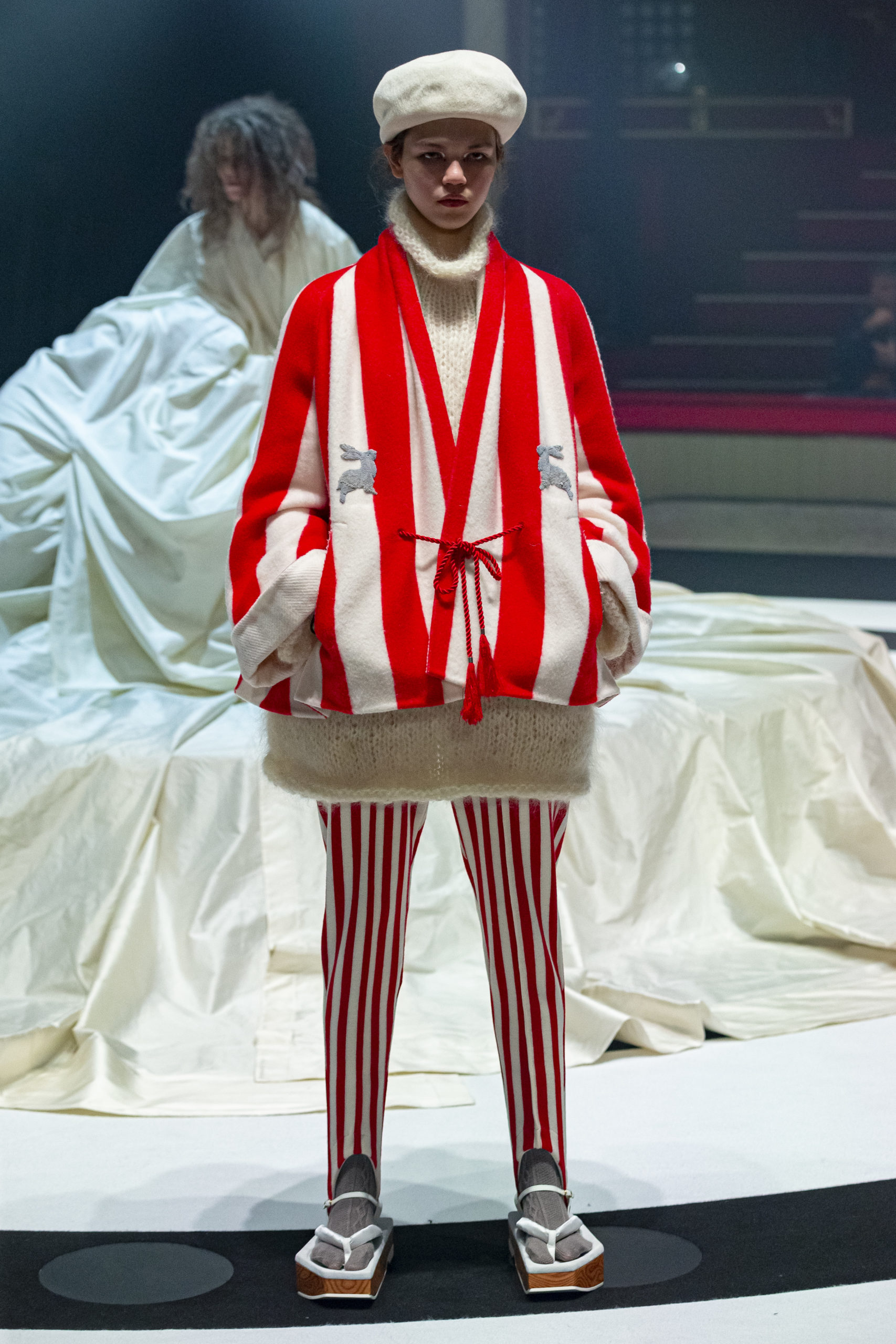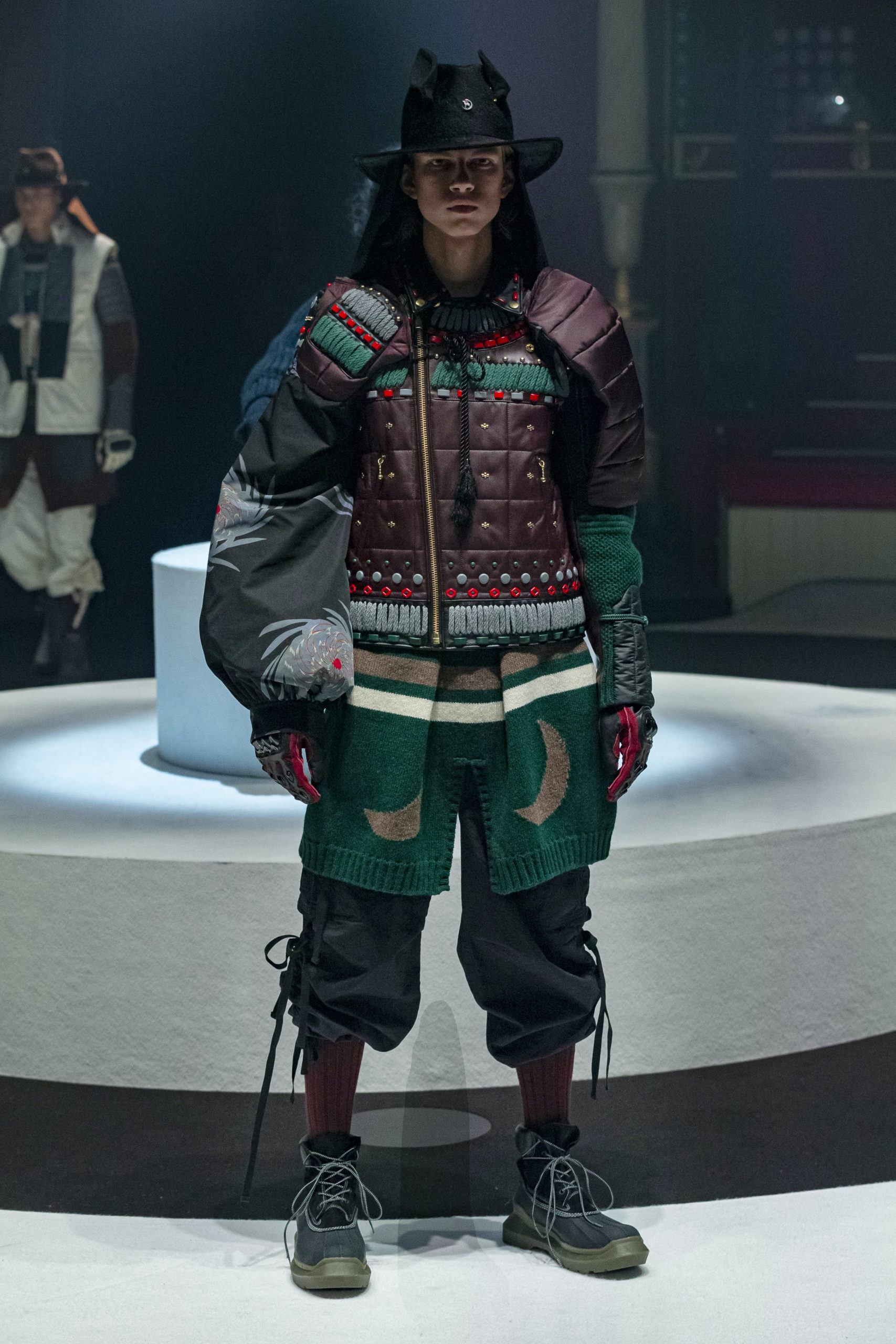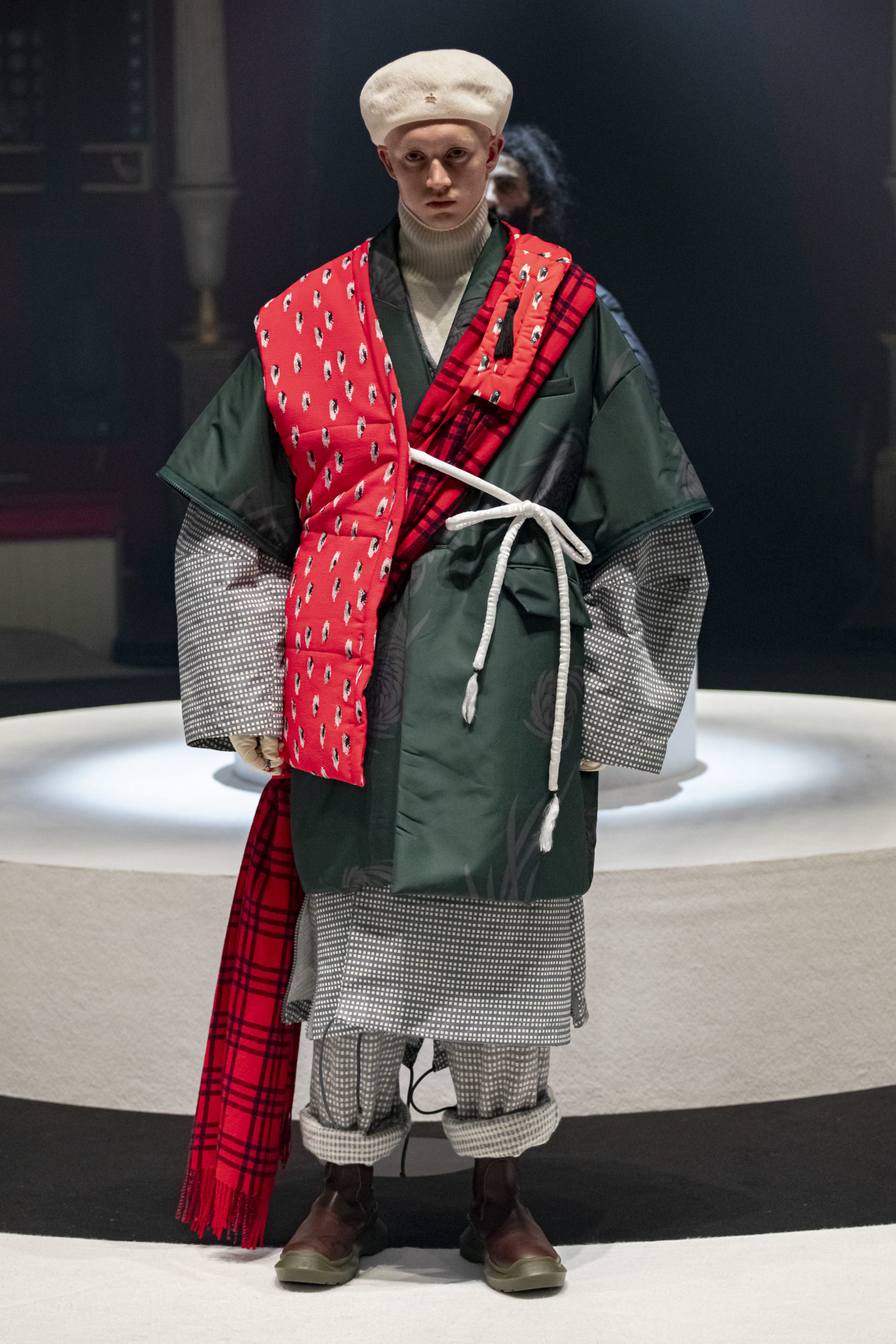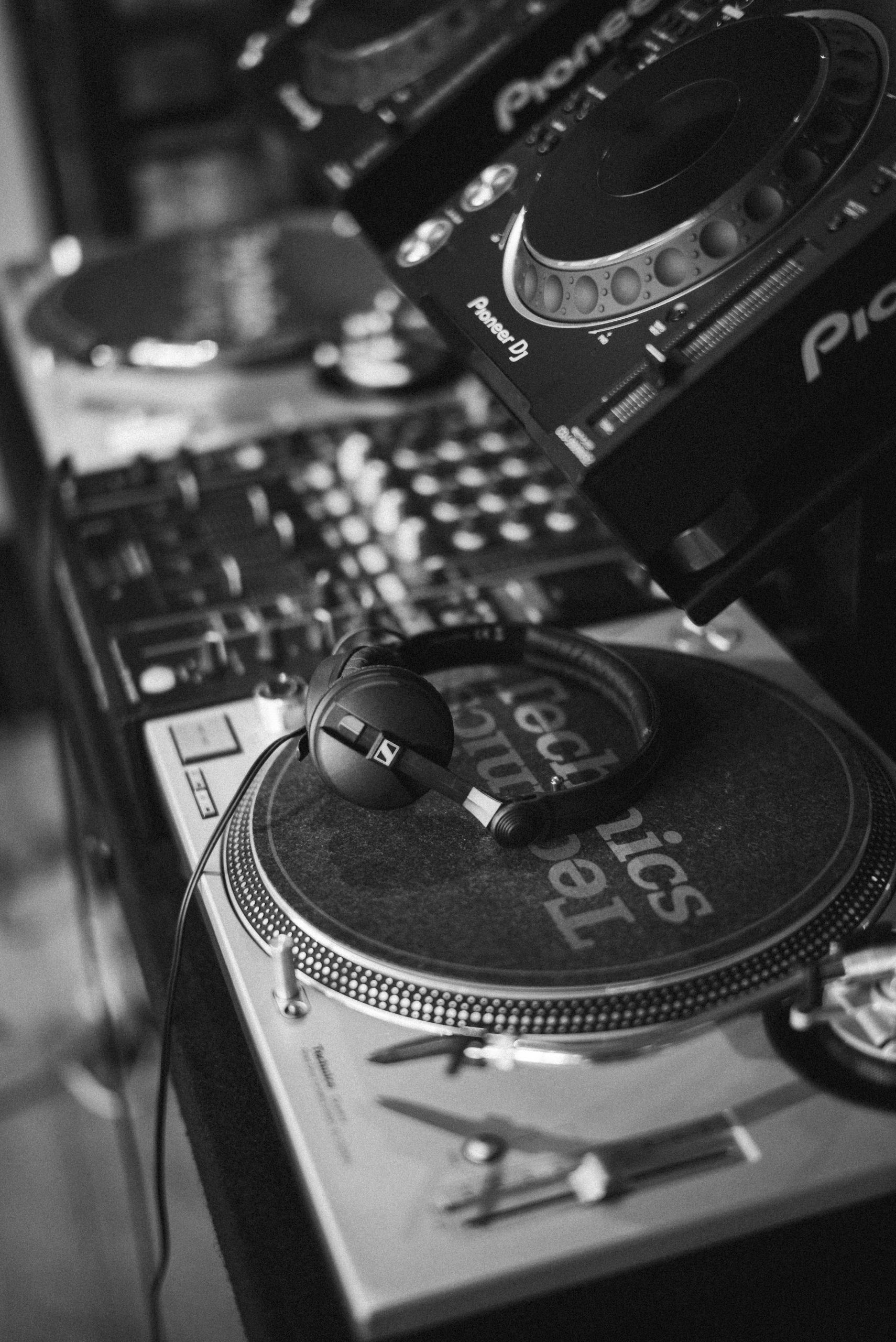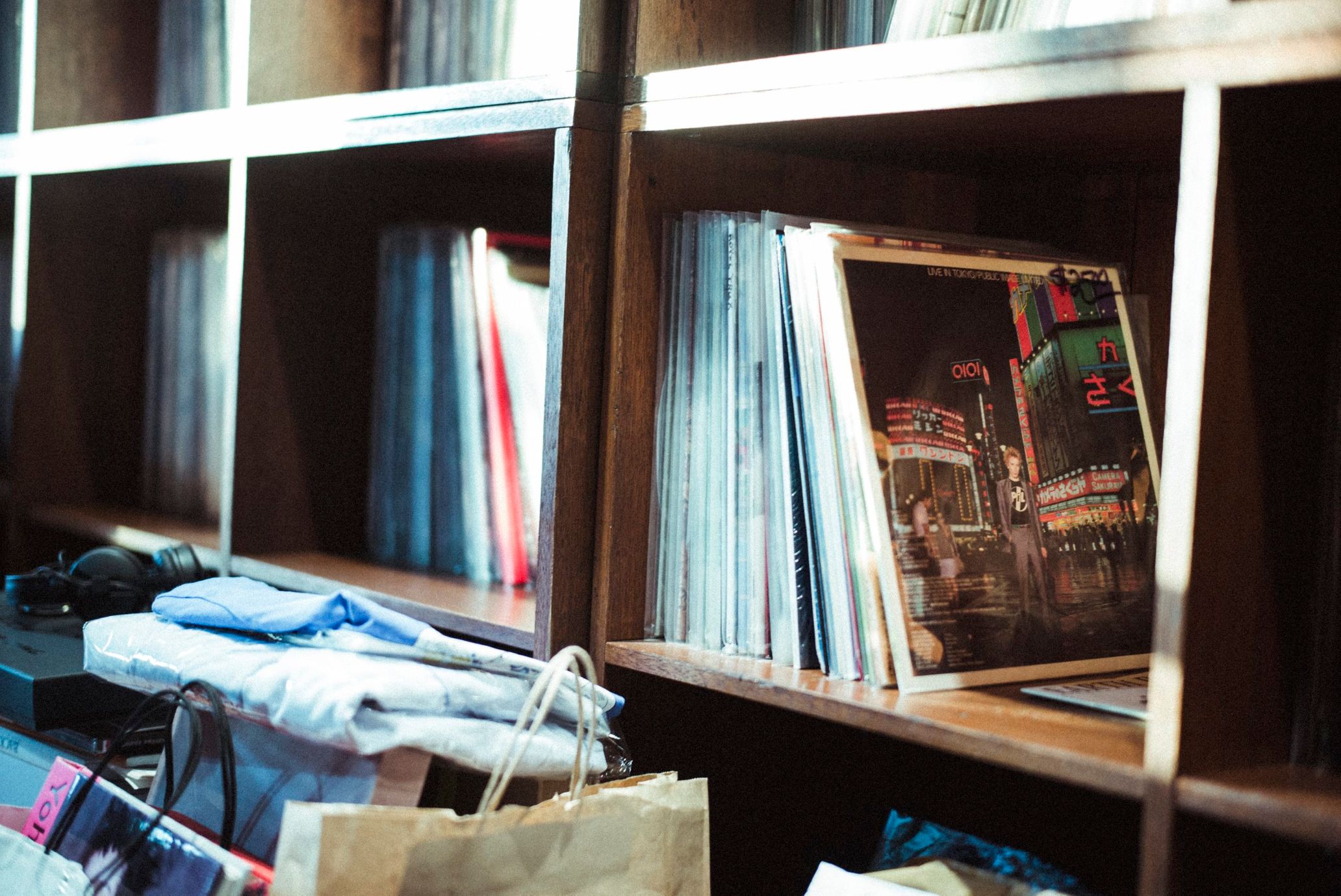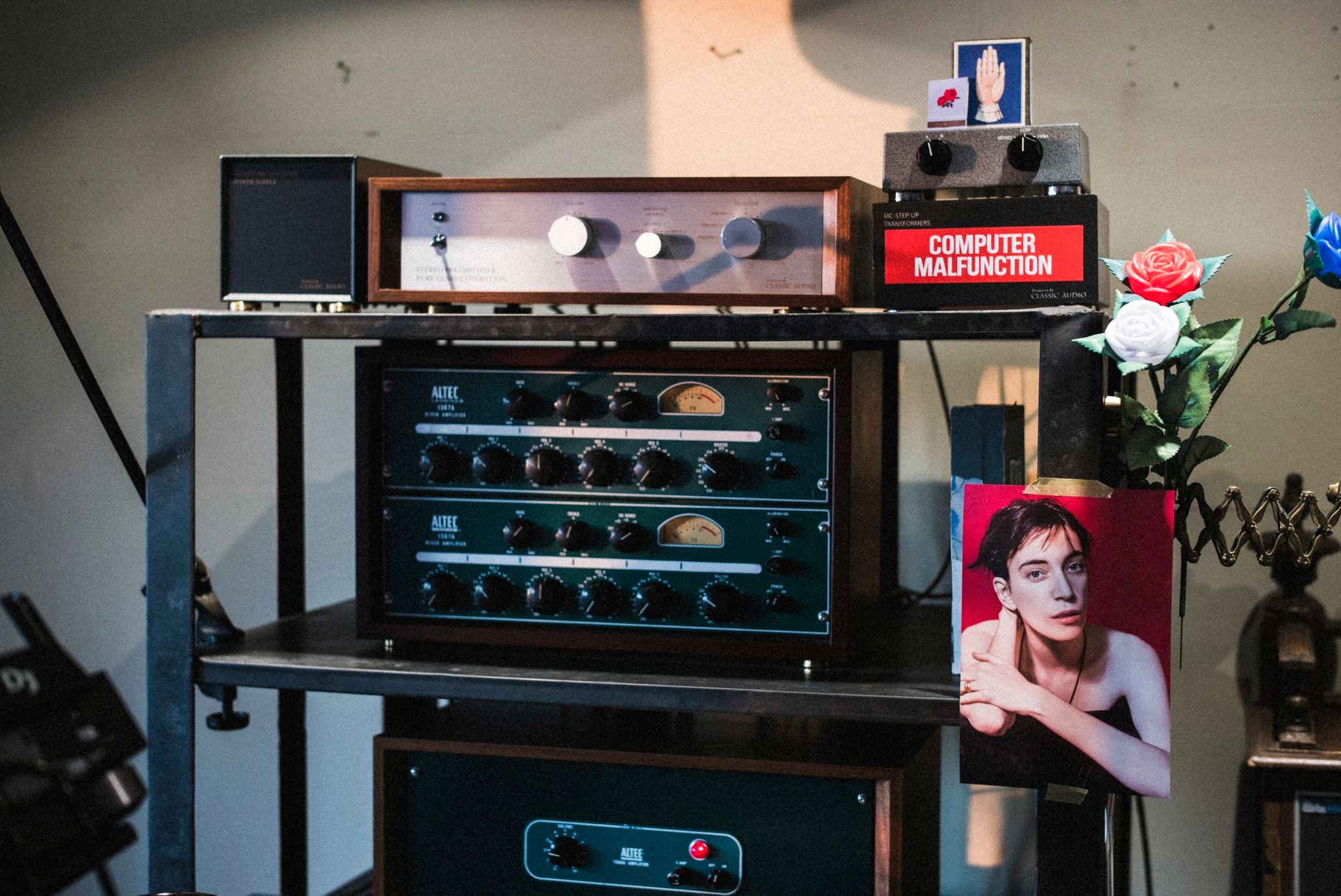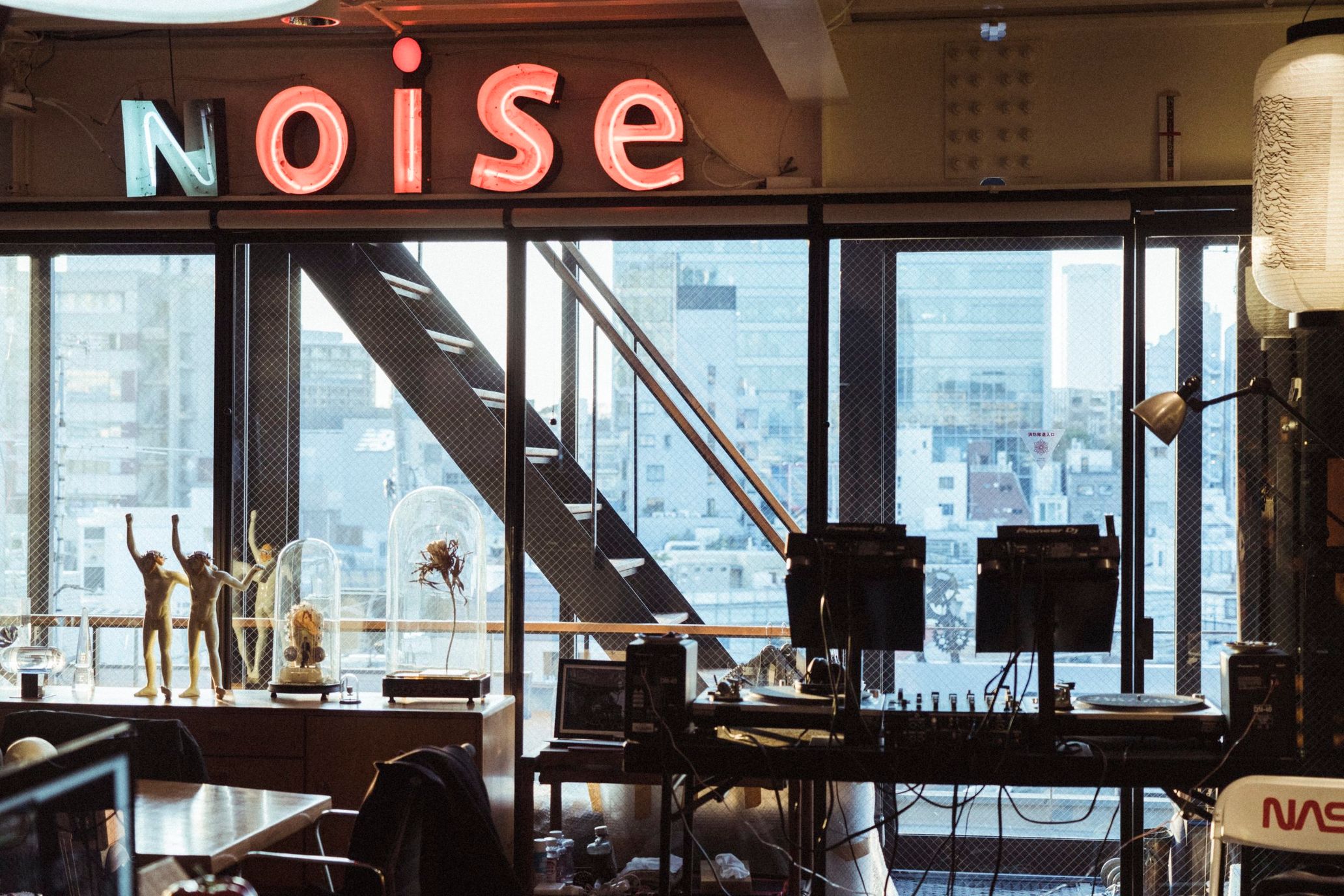This July 28th, TOKiON the STORE is coming to MIYASHITA PARK in Shibuya. The store will feature items created in collaboration with artists and creators from Japan and abroad. As part of this project, Curator Daisuke Gemma will talk to cultural innovators and trendsetters as he searches for new collaboration opportunities.This first conversation features Jun Takahashi of UNDERCOVER, a brand that Gemma himself professes to be a fan of.
In recent years, UNDERCOVER has collaborated with a diverse roster of brands, ranging from street to luxury and including Supreme and Valentino. The brand’s deep involvement with young artists, regardless of fame or genre, makes it difficult to label the UNDERCOVER of today as mod, street or punk.
Takahashi’s theatrical show inspired by Akira Kurosawa’s “Throne of Blood” for the UNDERCOVER’s Fall/Winter 2020-21 Paris Menswear collection, as well as the Shepherd UNDERCOVER’s campaign photos featuring musician/writer Okite Porsche are two good examples of the brand’s refusal to fit neatly into any one category.
In this conversation, we take a deeper dive into Takahashi’s world through his thoughts on music and the context of his creative work. What kind of product will be born from their collaboration?
Daisuke Gemma: I love the kind of person you are. You produce high-quality work and you’re a lot of fun.
Jun Takahashi: I’m happy to hear that (laughs). I think we’re similar in that we both have an interest in things that aren’t mainstream.
Gemma: When I saw your Fall/Winter 2020/21 Menswear show, I was reminded that your work isn’t bound by convention. It felt like theatre.
Takahashi: It was a big production with contemporary dance, so we had to rehearse the day before. I actually didn’t tell you that there’d be a performance to keep it a surprise. We started by coming up with a script, and then developed it further with the choreographer and music director, so it was a huge amount of work.
Gemma: What led you to choose Akira Kurosawa’s “Throne of Blood” as the inspiration for show?
Takahashi: I’d been thinking about doing a show inspired by one of Kurosawa’s films for years, but this time, a series of coincidences made it possible. I already knew I didn’t want it to be an ordinary show, and then Damien Jalet, the choreographer behind the 2018 “Suspiria” remake, reached out to say he was coming to Japan and wanted to meet me. We’d never met before, but I kept in touch with him because I liked his performances. While we were talking, I asked him to do a show with me, and he agreed to do it. I thought it’d be interesting to draw inspiration from Kurosawa’s works and contemporary dance.
Gemma: If it were me, I would’ve been hit by one of the arrows that fell from the ceiling.
Takahashi: I’d originally thought we’d end the performance with everyone falling to the ground as part of the dance, since it would be difficult to shoot arrows like at the end of the Kurosawa movie. But then Damien suggested having the arrows fall from above, and we started experimenting from there.
Gemma: Even though I knew it was rehearsed, I was on the edge of my seat.
Takashi: We practiced the moves at the studio after I arrived in Paris, but we didn’t rehearse it at the actual venue until the day before. Not a single arrow hit the dancer. But usually, we have fittings the day before the show, and this time, we also had dance rehearsals going on at the same time, so… I don’t want to have rehearsals before a show again (laughs).
DJs create a new way of communicating
Takahashi: We’ve had more opportunities to DJ together recently.
Gemma: I’ve been DJing for a while, and it was a long journey to finding my own style. But you have a great flow and got the hang of it really quickly.
Takahashi: I started mixing songs when I was almost 50, and I fell in love with it. For the past three years, I’ve been totally immersed in dance music. I didn’t use to appreciate it, but when I heard Ron Morelli, who also provided the score for my show, I realized that dance music is a consolidation of every genre. From there, the way I heard dance music did a total 180. Every DJ has their own flow and worldview.
Gemma: Yeah, they do.
Takahashi: That’s why everyone’s take on dance music is so inspiring. Even with house music, the way I hear it now is completely different from back in the day. At events, I listen to other DJs songs and flow. Actually, these days, I go to work at around 10:30 and I spend about two hours listening to new albums. I also check recommendations and download at least five albums a day, sometimes as many as 30. I listen song by song, and when I hear a song I like, I save it in a folder according to its BPM…that’s actually the only thing I’ve done today. (laughs)
Gemma: DJing is pretty time consuming.
Takahashi: It takes up a lot of time. Since I’m still not used to DJing, I like to prepare my set beforehand. Also, one in every four songs I include is Japanese, so it’s hard to choose songs that mesh. My skills haven’t caught up with what I’m trying to do.
Gemma: Those Japanese songs really leave an impression, though. Recently, I sent you a mash-up video of Radiohead and Yoshi Ikuzo, and you were like, “I want to use this, but I don’t know how.” (laughs).
Takahashi: I ended up using it at the Mars89 release party. I was too scared to look up at the audience though (laughs). When I hear a really perfect song, it makes me want to try creating something as well. Someday, I’d love to build a house deep in the mountains and have a lifestyle where I make music two days a week. There’s an endless amount of the kind of music I like: a mix of tribal, techno, and ambient. So, I don’t think I need to make my own music, but I can’t help but feel inspired when I hear about people making music.
Gemma: I look forward to hearing your music. It’s interesting how even when DJs play the same song, their personalities show up in the sound. Your sound is sharp.
Takahashi: Your sound is floaty and soft.
Gemma: I want my sound to be atmospheric, but yours is more striking. I can tell that you’re DJing just from the sound.
Takahashi: There are people whose sound is more consistent. Hearing them play makes me want to make music like that, too. Recently, when I went to an Akuma no Numa event, they started out by faintly playing Prime Minister Shinzo Abe’s coronavirus speech over some bass. They put that over a 90-BPM beat, added an effect, and continued like that for about 20 minutes.
Gemma: That’s art.
Takahashi: Exactly, it’s art. It’s not just connecting existing sounds, but mixing them in a way that takes the music further.
Gemma: Back in the day, DJ Harvey said that DJing is communication and education. Communication is playing songs that the crowd wants to hear, while education is taking it further by playing something unexpected. But communication isn’t all about pleasing the crowd, either.
Takahashi: That’s true. When you talk to some DJs face-to-face, they’re shy and avoid eye contact. And people who don’t like face-to-face communication communicate in indirect ways. In that sense, their personality comes out even in their music selection.
Gemma: A lot of the young artists you introduce me to are actually quiet in their private lives (laughs).
The driving force behind “We Make Noise, Not Clothes.”
Takahashi: Recently, there’s been a rise in youth counterculture. I think they aren’t satisfied with the state of the world, so they naturally create interesting work from that dissatisfaction. I’m really inspired by those kids.
Gemma: It might be that Japan today has the right conditions for counterculture to be born.
Takahashi: There was a similar trend in the late 1980s, but it wasn’t as extreme as this and was a bit more “fashion”. Now it’s more radical; I especially feel that way about Mars89 and MahiToThePeople. GEZAN released an album this year with dub engineer Naoyuki Uchida where all the songs were 100 BPM. It was a mix of dance music and tribal, the kind of respected album that’s rare in recent years.
Gemma: I feel like you naturally attract young people.
Takahashi: Sometimes, I feel like they’d be annoyed if I approached them. Because in Japan, everything I do is automatically categorized as Urahara [a streetwear subculture from the backstreets of Harajuku].
Gemma: I didn’t realize that even you sometimes feel that way.
Takahashi: Yeah, I’ve always had a complex about it. The men’s fashion world is especially traditional, so if you don’t know about the mainstream, people won’t take you seriously. I don’t agree with that way of thinking, though.
Gemma: I don’t like it either.
Takahashi: But abroad, people see me from a less biased perspective. There aren’t a lot of people like me, so I’m glad I got to go to Paris. In Japan, people get caught up in their preconceived notions or reject art they don’t understand.
Gemma: Sometimes, the collection reviews in Japan miss the point too.
Takahashi: Or sometimes they’re just an explanation. Overseas, for better or for worse, people critique things. I like hearing journalists’ objective opinions.
Gemma: I feel simultaneously happy and jealous seeing UNDERCOVER in the season’s rankings for Vogue or Business of Fashion.
Takahashi: I’m grateful to be compared to the big fashion brands based on my work alone. The best designers are artists, in my opinion.
Gemma: It’s hard for fashion to take root as a part of culture in Japan. I think it’s a little different in France or Italy.
Takahashi: Yeah, because there’s a respect for fashion. Tim Blanks and journalists who have been working in Paris for years appreciate all the creative elements that go into fashion, including culture and music.
Gemma: It’s a blessing when journalists understand a designer’s intentions. I feel that way even with the photos featuring Okite Porsche for the Shepherd UNDERCOVER. Without a knowledge of subculture, it’s difficult to understand what’s interesting about that border between funny and cool.
Takahashi: I don’t limit my definition of what’s beautiful or cool, so I feel that even comedy can be really cool if it’s disruptive. If you really think about comedy, the fact that it’s so different from fashion is what’s cool about it.
Gemma: That’s like UNDERCOVER’s “We Make Noise, Not Clothes.” It’s not just superficial, it’s actually true.
What kind of “hybrid” will the two create?
Gemma: TOKiON the STORE is opening in MIYASHITA PARK soon. I was a fan of the anarchy chair you made, so I was thinking we could create furniture together.
Takahashi: Sounds good.
Gemma: The anarchy chair is great because it has an element of punk and a hint of elegance. I’d like to create something with that kind of attitude.
Takahashi: There are a lot of people who overdo it when they try to make something contemporary, but I feel like we could strike a good balance together. It’s important not to forget to respect the classics.
Gemma: Like preserving the comfort of Herman Miller’s Aeron chair while adding something new.
Takahashi: It’d be nice if the legs were partially wood.
Gemma: I like the idea of adding natural elements to functional items. The key is to combine wood with material that’s inorganic.
Takahashi: Like adding velvet to the surface. Or if we’re talking about Herman Miller, the Eames LCW could be nice too. I put an anarchy symbol on the back of my LCW. It’s great to make the most of the chair’s comfort while adding on a new idea.
Jun Takahashi
Takahashi was born in 1969 in Kiryu, Gunma Prefecture. As a student at Bunka Fashion college, he started UNDERCOVER with a friend and just a few T-shirt designs. In 2002 (2003 Fall/Winter), he presented for the first time in Paris. In both 2001 and 2013, he was awarded the Mainichi Fashion Grand Prize sponsored by Mainichi Shimbun, the national daily newspaper. Along with designer Nobuhiko Kitamura of HYSTERIC GLAMOUR, he also has a side project called ZAMIANG. In addition, he both DJs and organizes music event “Mizu Tamari” with graphic artist YOSHIROTTEN.
https://undercoverism.com/
Daisuke Gemma:
Born in 1975, Gemma moved to the U.K. in 1996. In 1997, he began working for Browns in London, launching his career as a buyer. After returning to Japan in 2002, he established the Nakameguro select shop FAMILY, where he became executive director. In 2007, he ventured off to establish his own office. Since then, he has worked as branding director of CELUX (a members-only club for LVJ Group). Currently, he works as a creative director at sacai and a buying consultant for Lane Crawford, a specialty luxury store from Hong Kong. He is also a member of the Ministry of Economy, Trade and Industry’s Fashion Policy Council.
Translation Aya Apton


